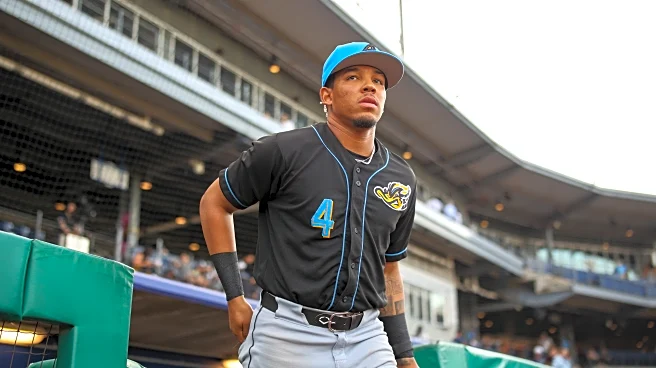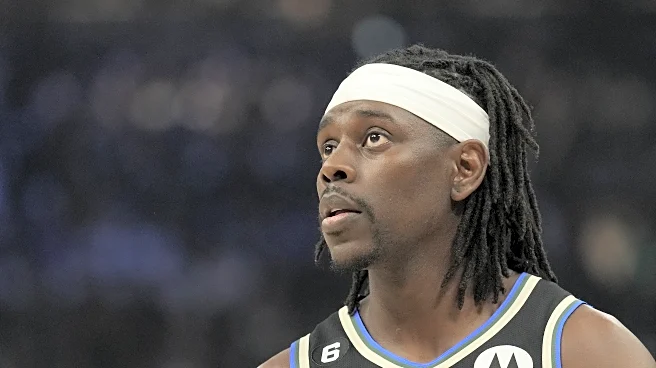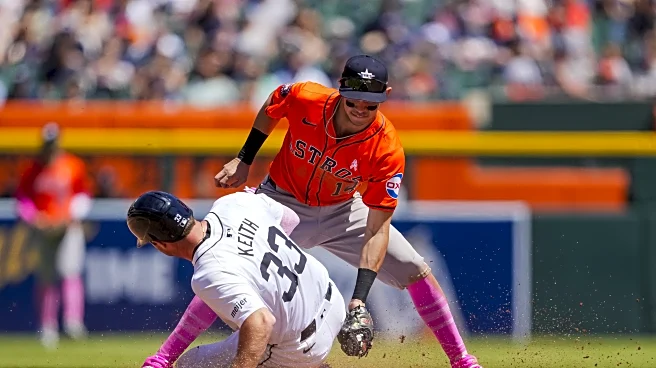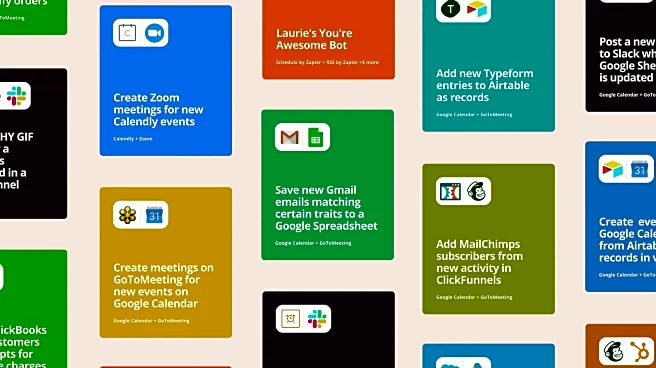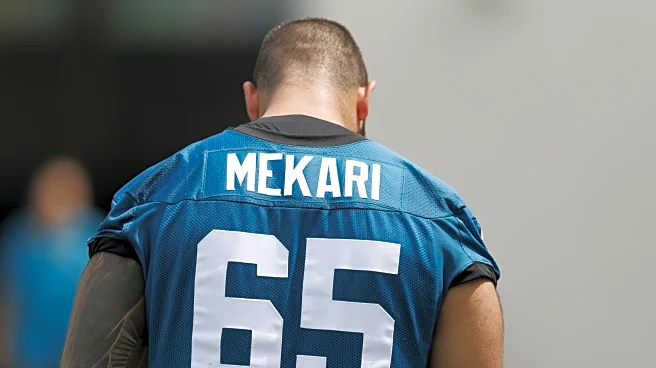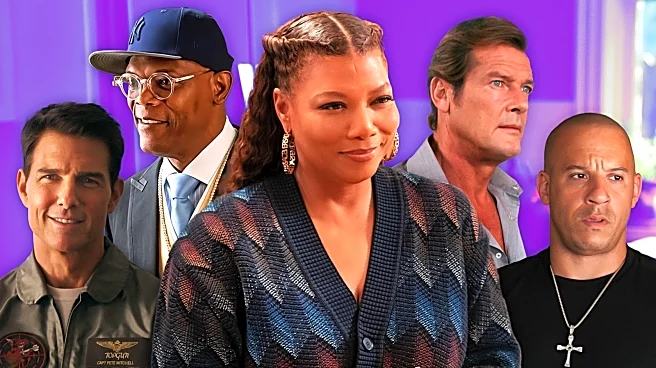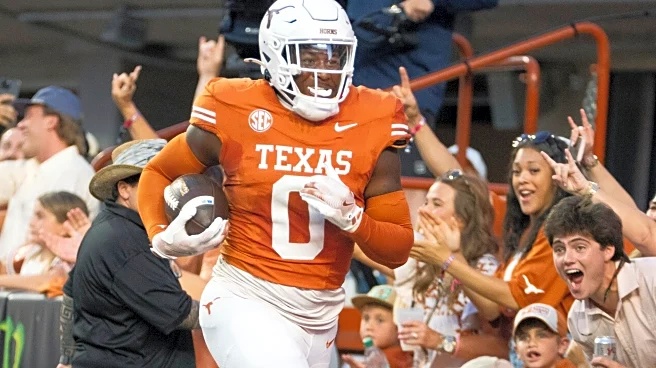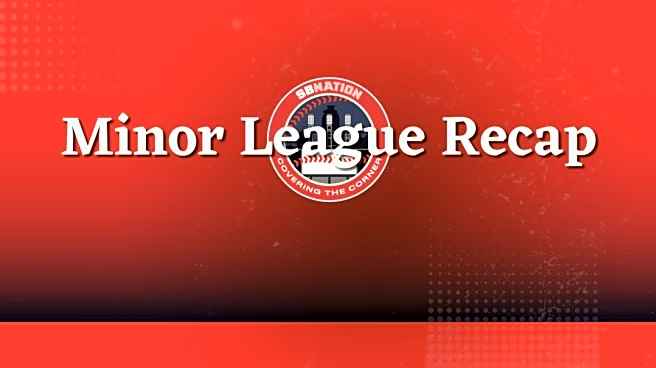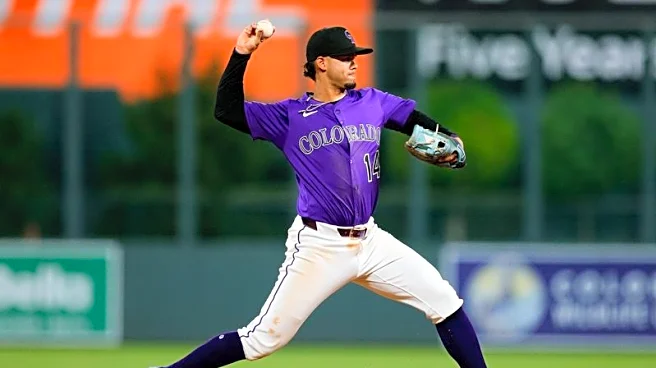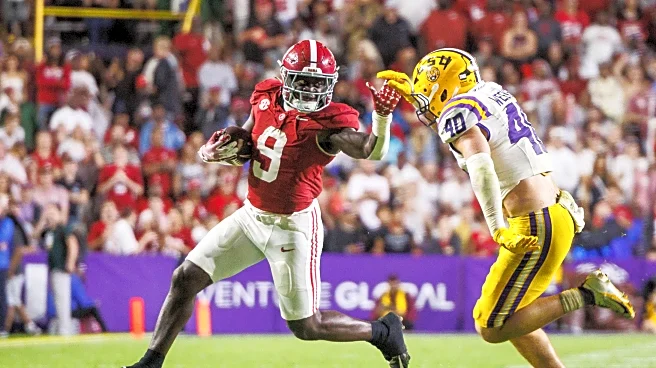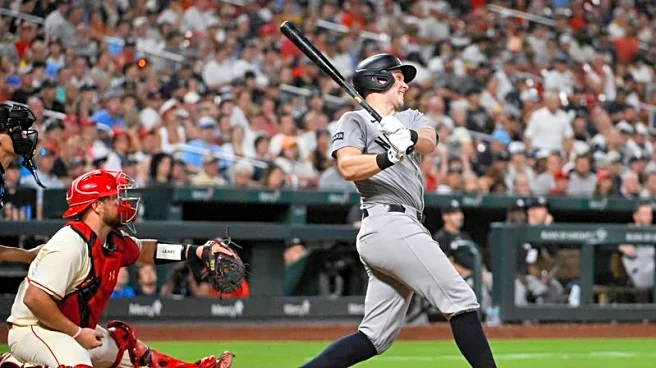
We’re past the All-Star Break, which means all eyes are off the MLB Draft and moving towards the Postseason. However, I want to look further down the line into the future. Cleveland boasts one of the deeper farm systems in all of baseball, and for the first time on Covering the Corner, I want to unveil my top 20 prospects in the system.
The scale works on your typical 20-80 with +/-5 increments. I will reference FanGraphs here with some of my own tweaks to the table, and I do want it to be assumed
that this is the scale labels that I will be working with throughout this piece:
| Grade | Label | WAR (hitter) | FIP | Multi-Year Peak Example |
| 20 | Organizational Depth | — | — | — |
| 30 | Up and Down in org | < -0.1 | — | Dayan Frias // Tyler Thornton |
| 40 | Bench Player // SP5 Ceiling | 0 – 0.7 | ~5.00 | Tyler Freeman // Xzavion Curry |
| 45 | Regular/Platoon Contributor // SP4 Ceiling | 0.8 – 1.5 | ~4.40 | Daniel Schneemann // Logan Allen |
| 50 | Average Everyday Player // Fringe SP3 Ceiling | 1.6 – 2.4 | ~4.20 w/ 150+ IP | Roberto Perez // Aaron Civale |
| 55 | Above Average Regular // Mid-Rotation Ceiling | 2.5 – 3.3 | ~4.00 w/ 160+ IP | Josh Naylor // Tanner Bibee |
| 60 | All-Star Reserve // SP3 w/ Fringe SP2 Ceiling | 3.4 – 4.1 | ~3.50 w/ 180+ IP | Jason Kipnis // Justin Masterson |
| 65 | All-Star Caliber // SP2 Ceiling | 4.2 – 4.9 | 3.25-3.49 w/ ~200 IP | Victor Martinez // Gavin Williams |
| 70 | Receiving MVP Votes // Fringe SP1 Ceiling | 5.0 – 5.9 | ~3.20 w/ ~200 IP | Michael Brantley // Carlos Carrasco |
| 75 | Top 10 in MLB | 6.0 – 7.0 | 2.60 – 3.00 w/ ~200 IP | Francisco Lindor // Shane Bieber |
| 80 | Top 5 in MLB | > 7.0 | <2.60 w/ ~200 IP | Jose Ramirez // Corey Kluber |
There’s a lot to get to here, so let’s dive right into it, starting with my top Guardians prospect…
1. SS Angel Genao

FV Overall: 55
Age: 21 (5/19/2004)
B/T: S/R
Level: Double-A Akron
Acquired: International FA, January 2021 // Dominican Republic
Preseason Ranking: 1
Genao has done nothing but rake since his debut and cement himself as this organization’s top prospect. In terms of just doing everything well, Genao is a jack of all trades. As Genao has gotten older, he’s grown into his frame, going from 5’9”, 150 pounds, to 6’0”, 195 pounds, and he really began to damage the ball in 2024. As a switch hitter, he has great feel from both sides of the plate, he’s going to stick at shortstop as his soft hands and quick reactions lend to a future success at short. He also makes tremendous swing decisions, and coupled with a strong hit tool, the great swing decisions could see development beyond gap to gap power.
Thus far in Double-A, Genao has seen a slow start and current slump sandwich between a really strong stretch, and it’s led to him trying to swing his way out of his most recent slump. Even still, his overall discipline remains a strength. He’s still whiffing under 20%, chasing less than 25%, and his zone contact rates are still running strong at 87%. Once Genao starts impacting the ball more and getting the ball in the air (running career high 52% groundball rate), he will find a groove soon.
STRENGTHS
- Great feel for the zone, does not miss or get fooled much
- Gap to gap power has developed into stronger EV’s as Genao has gotten stronger. An approach adjustment could see Genao grow into more pull-side pop and more home runs
- Bat speeds have improved, and he appears to be developing into a balanced switch hitter with more power from the right side
- Arm strength is plus, soft hands, will likely stick at shortstop
QUESTION MARKS
- While more disciplined than a free swinger, Genao can see contact inconsistencies. Currently running a career high 23.3% infield pop-up rate as he tries to find more power within his profile
- Has been rolling over too much on pitches on the outer third since returning from injury in ‘25
- Missing a lot of time with shoulder sprain has seen power numbers taper off in Akron as he adjusts to both being healthy and the Double-A level
2. OF Chase DeLauter

FV Overall: 55
Age: 23 (10/8/2001)
B/T: L/L
Level: Triple-A Columbus
Acquired: 2022 MLB Draft (1:16), James Madison
Preseason Ranking: 3
…here we go. Combine Chase DeLauter’s 2025 stats with his hit tool with his power tool with his speed and fielding ability, and this is a five-tool player who is at least 10 points higher than his 50 FV grade…if he could just stay healthy.
It has been a complicated year for DeLauter that probably sums up his time as a baseball player all too well. DeLauter missed a large portion of the beginning of the 2025 season following a sports hernia surgery, but following that, he has made child’s play of Triple-A, crushing everything in sight, reaching base in every single game with the Clippers.
The foot wasn’t giving him any issues, he was fit as a fiddle, becoming everything Guardians fans ever thought he could be. Flash forward to this past week, and DeLauter’s 2025 is effectively over after fracturing his hand, needing surgery to repair his hamate bone. Luck swings both ways, just not for Chase this year.
If DeLauter could put together a single season where he could be just a little healthy, he’s far and away the best prospect in this system, and might be the best hitting prospect this team has had in my lifetime. We just haven’t seen it yet.
3. 2B Travis Bazzana

FV Overall: 55
Age: 22 (8/28/2002)
B/T: L/R
Level: Triple-A Columbus
Acquired: 2024 MLB Draft (1:1), Oregon State
Preseason Ranking: 2
Bazzana was Cleveland’s pick at 1.1 in the 2024 Draft, and despite an oblique injury that stole two months from Bazzana’s first full season within the organization, he’s come back from the injury looking less stiff at the plate, and he’s driving the ball pull-side, something he struggled with early on this season. The biggest area where Bazzana has struggled has been in the field. The movement at 2B as not been fluid, and his throws not great.
Early this season, Bazzana looked incredibly stiff at the plate. He wasn’t fluid through the ball, wasn’t impacting much of anything pull-side, and the outer third of the plate was a mystery to him. Since his return, he looks a lot like he did at Oregon State. His timing mechanisms don’t look minimized, his arms are driving through more evenly with his hips, and if his return to Akron is any indication, the pull-side damage is coming. An overdue hot streak for Bazzana was only a matter a time, and that’s exactly what happened. Bazzana is now in Columbus, and we all look forward to getting the Statcast data.
My concerns with Bazzana are less production and all progression, and it’s why he drops from 2 to 3 here. While I seem to be the lone wolf here that doesn’t have him at 1 or 2, I do have my reasons. He struggles laterally defensively, his speed overall is not the plus grade it was thought to be, and his bat speed is below average. Overall, he just looks stiff. With those knocks though, are some major strengths that make me believe he’s very much still the second baseman of the future here. His swing decisions are phenomenal, and he has a knack for lifting the ball and getting it on the barrel. If I were ranking Bazzana in a top 100, he would likely slot somewhere around 50 unless he can tap into some power.
STRENGTHS
- In total synergy knowing where the zone is. Does not chase (<16% chase rate), rarely swings and misses
- Does not whiff (<20% whiff rate)
- Excels at getting barrel to ball with optimal launches
- Gap to gap power is sustained; as he gets more comfortable coming back from the oblique injury, there may be more pull-side home run power unlocked
- Good base runner, high IQ, capable of being a 20+ steal guy in Majors
- Tinkerer; always finding something he feels he needs to improve upon throughout his game (complimentary)
QUESTION MARKS
- Overly passive (sub-40% swing rate, 62% zone swing rate); needs to be more aggressive in his approach with very hittable pitches in the zone
- Bat speed and overall HR power has not developed since joining the org; what was once thought of as possible 20+ HR power feels a lot more like 15
- Landlocked at 2B; CF feels like a pipe dream after watching Bazzana play the field in Akron. Lateral quickness is not a strength
- Struggles at times rolling over outside pitches from either handed pitcher
- Tinkerer; always finding something he feels he needs to improve upon throughout his game (derogatory)
4. RHP Khal Stephen

FV Overall: 55
Age: 22 (12/21/2002)
B/T: R/R
Level: Double-A Akron
Acquired: Trade via TOR for Shane Bieber (7/31/25)
Preseason Ranking: N/A
The return for Shane Bieber nets a right-handed pitcher dominating the minor leagues in his first season as a pro.
Khal Stephen was taken in the second round, pick 59 in the 2024 draft, and upon his debut in A-Ball with Toronto, he proceeded to continue the dominance he showed at Mississippi State. This resulted in a promotion to High-A after 39.1 innings, and after dominating High-A, Stephen was promoted to Double-A.
Stephen is currently dealing with a mild shoulder impingement, and it’s been described to me to be nothing too serious and Toronto has been conservative getting Stephen back on the mound just to be safe.
As for his stuff, Stephen has a plus fastball and slider, and his changeup (which might be a splitter but hasn’t been classified as such) has also come along quite nicely, becoming a possible plus offering soon. His curveball lags behind but is still a solid offering.
**Small sample size disclaimer** Stephen’s fastball sits between 18-21 inches of iVB with 6-9 inches of horizontal break. He’s a strider down the mound at big 6-foot-4, getting anywhere from 6.8 to 7 feet down the hill, and we all know Cleveland likes their extension guys. His slider is running a near 40% whiff rate, and it’s primarily become a weapon against RHH. Conversely, his changeup has become lethal against LHH specifically.
Stephen has also run a staggering 5.1% walk rate to a 27.9% strikeout rate this season across all levels. His ability to pound the strike zone with this level of overall stuff is something we’ve not seen out of a prospect since, ironically enough, Shane Bieber. Stephen’s fastball sits in the 92-94 range, but I think there’s more velo there.
The real development with Stephen in Cleveland will be how much they can add to his cutter and sinker. Stephen used the two pitches less than 10% of the time combined, but the sinker, which feels more like your classic two-seamer, has real quality to it. Again, SSS disclaimer, but Stephen’s registered sinkers have averaged around 19.1 iVB with 14 inches of run. Again, more 2-seam type of movement, but still a quality offering. Think Nick Pivetta’s sinker/2-seamer. While he’s not using it a ton, it’s a real weapon if it continues to develop.
The average sinker movement profile from starting RHP in MLB with an arm angle ranging between 44 and 52 degrees (Stephen’s is 48) is 10.1 iVB and 13.8 horizontal break. Stephen averages nearly 10 inches more induced vertical break and about the same horizontal break.
STRENGTHS
- Fastball is a projectable, dynamic offering with legitimate movement. Could see him add velo with CLE system
- Slider/changeup combo makes him a handedness nightmare
- CH tunneling with FB has made him a nightmare against LHH (18.8% usage, 36% whiff rate, .148 xwOBA vs. LHH)
- SL is equalizer threat vs. RHH (29% usage, 46% whiff rate, .153 xwOBA vs. RHH)
QUESTION MARKS
- Finding consistency getting fastball up in zone against RHH
- Using command to get chase; can get hit if he sticks in the zone too much
5. 1B/OF Ralphy Velazquez

FV Overall: 50
Age: 20 (5/28/2005)
B/T: L/R
Level: Double-A Akron
Acquired: 2023 MLB Draft (1:23), Huntington Beach High School
Preseason Ranking: 8
Ralphy Velazquez has been the breakout story of Cleveland’s 2025 farm system. After starting the season off sluggish (..191/.279/.401 through May 31), Velazquez has simply turned into one of the hottest hitters in all of the minor leagues. Between healing up from nagging injuries and working through swing adjustments, Velazquez was popping a lot of pitches up or slamming them into the ground. Around early June, something clicked with Ralphy, and he’s ascended.
From July 1 to August 10 prior to his promotion to Akron, Velazquez tore up High-A to the tune of a .336/.417/.603 slash line with 7 home runs, 8 doubles, and a triple across 116 at-bats. Ralphy has been walking nearly as much as he’s struck out since the start of July, and the power is thunderous.
Velazquez was clocked hovering around 80 mph in bat speed at last year’s Future Stars game during batting practice, and he was running 110+ mph exit velos as a high schooler. Now, as a 6-foot-3 240 pound 20 year-old, Velazquez is finding higher end exit velos north of 115 mph while his recent two home run game in Akron saw both of his no-doubter tanks reach 110+ mph. The overall contact rate in Lake County was improved upon from a season ago, going from a 74.2% mark in 2024 to 78.4% this season in High-A, and Velazquez is also making roughly the same contact in-zone (~84%). On top of that, Velazquez is crushing lefties this season, more so than he is righties, slashing .282/.358/.482 against southpaws. A great sign that there could be a lot more in this profile beyond a platoon bat. If you look close enough, there’s a Kyle Schwarber path there.
In the field, Velazquez covers a lot more ground in the corner outfield than you’d anticipate. He’s a sneaky good athlete with good burst, and that helps him overcome suboptimal jumps, largely due to sheer inexperience, to get to flyballs. Knowing that he isn’t a total lost cause in the outfield as a 20 year-old marks his profile as a lot more versatile and projectable than being possibly landlocked at 1B.
STRENGTHS
- Arguably the most raw power in the system; game power is beginning to consistently meet raw power outputs
- Hit tool has taken a leap; a lot less whiff on breakers than we saw last season
- Chase rate is down nearly 10% from last season in Lake County
- Can stick in cOF long term; sneaky athleticism projects more than landlocked 1B
QUESTION MARKS
- Not catching overall limits his value, and bat will be driving force throughout minor leagues
- How will overall contact rates fare in Akron through end of season?
6. C Cooper Ingle

FV Overall: 50
Age: 23 (2/23/2002)
B/T: L/R
Level: Double-A Akron
Acquired: 2023 MLB Draft (4:125), Clemson
Preseason Ranking: 7
Ingle has taken to minor league baseball like a pig to mud. Labeled a plus athlete with great contact hitting traits, it’s been the power supplied thus far that’s ascended Ingle up the ranks so quickly. At Clemson, Ingle amassed just 14 home runs total across 578 plate appearances with no more than 8 in a single season. In his first full year in 2024, across at-bats with both Lake County and Akron, Ingle socked 11 homers, and thus far in Akron in 2025, he’s already at 9 in over 330 PAs.
Development within Ingle’s attack angle are partly to thank for the power creep, as is some added size. Ingle’s contact ability is a plus trait, and now that he’s advanced enough just within a couple years of being drafted to where he’s effectively spraying the ball both gap to gap and pull side for tanks makes him an easy top 10 prospect in the system alone. Then you get to his defense. Ingle is a very good athlete who has developed well defensively in Cleveland’s renowned defensive catching factory. The added muscle has helped with Ingle’s ability to be a day in, day out catcher despite being a bit undersized.
Overall, Ingle both developing defensively and adding pop has helped him make a massive leap into the top 5 for the Guardians.
STRENGTHS
- Plus bat to ball ability; adjustments in attack angle have seen great ability to find the barrel translate into more home run power
- Very agile behind the plate; has soft hands and has become a solid framer
QUESTION MARKS
- Arm is not strong, can be stolen on at stronger rates than average
7. RHP Braylon Doughty

FV Overall: 45
Age: 19 (12/7/2005)
B/T: R/R
Level: Class-A Lynchburg
Acquired: 2024 Draft (CB-A:36), Chaparral High School
Preseason Ranking: 9
Prior to July 31, Doughty was my top pitching prospect in the Guardians system. Enter Khal Stephen, and Doughty is bumped down just a touch, but I can’t see him staying outside of the top 5 for long.
Doughty boasts advanced pitchability for his age. The control for a 19 year-old was the best of a strong prep arm class in 2024, and his slider teetering on already being a plus offering with his curveball nearing plus level with certain plus future. He also has a really interesting quirk out of the windup as he has been known to quick pitch some guys as well as mess with a hitter’s timing in a Nestor Cortes kind of way.
As Doughty gets further into his first season as a pro, his fastball is seeing better results. Earlier in the season, his fastball was getting turned to way too often as Doughty got behind in counts, and he would get hit hard. That’s not been the case as much lately, and the 3,000 RPM slider is getting more whiffs as well. Doughty has put together a strong run of starts going back to the end of June, running a 2.50 ERA across four starts in July alone. Over his last eight starts, Doughty is running a 2.25 ERA across 36 innings with a 28.9% strikeout rate to a tremendous 4.3% BB rate. That’s a 25.5% K-BB%. Keeping runners off the base paths is something he’s excelled in lately, posting a 1.000 WHIP across that stretch, and 0.867 since the start of July. The more whiffs Doughty can find, the stronger his performances have gotten.
Doughty is almost assuredly on an innings cap, so his season is likely winding to a close, but I anticipate an accelerated climb through the system next season.
STRENGTHS
- SL/CB play at plus level; finds lots of whiffs with both offerings
- Supremely advanced feel for strike zone for age
- Knack for getting ahead in counts leads to extremely high rate of quick outs
QUESTION MARKS
- Can struggle finding zone with tendency to nibble with fastball; tends to have it leak back over middle of the plate when behind in the count, leading to some hard contact
8. OF Juneiker Caceres

FV Overall: 45
Age: 17 (8/15/2007)
B/T: L/L
Level: Class-A Lynchburg
Acquired: International FA, January 2024 // Venezuela
Preseason Ranking: NR
Every season, I have my unavoidable Hillcats obsession. Last season, it was Welbyn Francisca. This season, it’s Juneiker Caceres. Ascension doesn’t even begin to describe what kind of tear Juneiker Caceres has been on since his debut as a 16 year-old in the Dominican Summer League last season through now. Despite being a fringe top-10 international signing for the Guardians in the Winter of ‘24 ($300,000), Caceres has leapt the rest of that class thus far. He has such a tremendous great feel for the barrel while producing a swing that you just don’t see many 16 year-olds possess. His actual on-field and hitting development is out-pacing his physical development, and as Caceres continues to add muscle, he turns 18 on August 15, the more his raw power will grow.
Caceres received a promotion to Lynchburg after carving up his first taste of the US and its pitching (.289/.419/.469 in 160 PA in Complex League), and upon his arrival to Low-A, he’s continued his hot stretch, smacking his first home run and registering four consecutive multi-hit efforts in his first four games. The exit velos are there as well. Caceres has registered multiple 100+ EVs in Lynchburg with his highest clocking in at 106.7. This is a 170-pound 17 year-old creating this kind of loud contact.
For reference, you see a lot of higher speed prospects essentially create extra-base hits with their speed at the lower levels. Caceres is a solid runner, maybe a touch above average, and he registered 17 XBHs in the DSL in ‘24 across 167 plate appearances without a single home run. That’s true gap to gap power potential at 16 years old. Moving into 2025, Caceres has notched 19 XBHs with four home runs. There is very real power to grow into here just through the future plus contact ability, and when you couple it with a swing that is built to hunt gaps and a potentially plus hit tool, this is the highest upside teenage bat in Cleveland’s farm system.
My lone criticism of Caceres right now, though he’s on an absolute tear since the Lynchburg call-up, is that he will need to pull back some of his free swinging tendencies and trust his ability in the zone. His willingness to expand outside of the zone (36% chase) is creating its own issues within the zone as he currently feels, justifiably, that he can hit anything.
STRENGTHS
- Advanced bat control with optimal bat path
- Has advanced ability to find barrel in the zone
- Generating quality pull-side power
QUESTION MARKS
- As he sees higher quality LHP, does the plate discipline deteriorate? (chases a lot of breakers against LHP)
- Despite playing all three OF spots in DSL/Lynchburg, Caceres likely will not stick in CF
- Needs to improve within the zone given his overall swing profile (75% z-con)
9. 1B CJ Kayfus

FV Overall: 45
Age: 23 (10/28/2001)
B/T: L/L
Level: MLB Cleveland
Acquired: 2023 Draft (3:93), Miami (FL)
Preseason Ranking: 5
CJ Kayfus is putting up fantastic numbers in Triple-A for the Clippers and earned a call-up to Cleveland, so why did he fall a few spots and out of the top 1B slot in the system? It’s all under the hood.
The raw data for Kayfus has come out as he made his leap into Triple-A/MLB, and yes, this is a very good hitter, but now, with him posting nearly 300 plate appearances within a league where we have Statcast data readily available, my opinion on what kind of player Kayfus can be has shifted. Kayfus snuck into my top 5 at the end of last season and maintained there into the preseason after a fantastic 2024, and I believed this was someone with real lineup changing ability. I no longer believe that fully, though I still do believe Kayfus can be a contributor to the Guardians at the Major League level.
I had Kayfus as a 50-grade player. That’s dropped a tier, and it primarily revolves around the fact that his raw power numbers have come down (50th percentile average EV [88.4], 56th percentile EV90 [104.5] and max EV [110.4], 68.5 mph bat speed), and he has a couple glaring holes in his swing that show a platoon bat future. Kayfus has tapped out his raw power development, but the hit tool can improve if he can figure out how to cover up some pretty rough spots against lefties. In Columbus, Kayfus is currently running a 41.7% whiff rate against sliders/sweepers from LHP.
Kayfus is also struggling with plus velo from either LHP or RHP. It didn’t start out this way either. Through mid-May, Kayfus was hitting .500 against pitches at 94+ mph. Since then, Kayfus has registered just two XBH (2 doubles) and is hitting just .208 with a .282 xwOBA, and 27.7% whiff rate. Even if you include the early portion of the season, Kayfus has not registered a barrel in 30 at bats that ended via a 94+ mph pitch. That is very concerning.
I am personally in love with Kayfus’s swing decisions in the zone, especially against RHP. He is not just swinging to do damage, he is swinging at optimal pitches to find gaps or drive out to right field. A place that’s favorable to pull-side LHH? Progressive Field. Despite the fall, I still believe Kayfus is part of Cleveland’s future for a while.
Overall, Kayfus’s ceiling to me is Ryan O’Hearn with more swing and miss.
STRENGTHS
- Pull-side gap-to-gap and HR power, especially against RHP, is sustainable and real. He is going to over-achieve his raw power.
- An athletic 1B defender with a chance to find innings in RF; despite shorter stature, he is a vacuum at 1B
- Do not miss with a slider as a RHP; it will end up in the seats
QUESTION MARKS
- Struggles with breaking pitches against LHH (41.7% whiff)
- Can be neutralized with higher velo (94+ mph)
- Well below average bat speed (68.5 mph)
10. CF Jaison Chourio

FV Overall: 45
Age: 20 (5/19/2005)
B/T: S/R
Level: High-A Lake County
Acquired: International FA, January 2022 // Venezuela
Preseason Ranking: 4
2026 is going to be a huge year for Jaison Chourio. Battling through a 2025 where he suffered a broken wrist, I largely view this season as him trying to get back to his baseline. Next season, possibly in Akron, Chourio will have a very real shot to make a leap into the top three of this list. A top 100 guy for many publications, Chourio’s potential for becoming a five-tool player akin to his brother, Jackson, has many salivating over what he can be, but adjustments have to be made to get there.
There is a real hit tool with Chourio, but it has a caveat which we’ll get to in a bit. His swing decisions are very good for his age, but when contact is being made, it’s continually near a 50% ground ball rate, and what couples with that to compound the issue is he’s staring at way too many hittable pitches. I consider Travis Bazzana to be too passive. Bazzana hovers around a 38-40% swing rate. Chourio right now in Lynchburg is swinging at just 34.9% of pitches. Despite hitting .190 in Lake County through July, Chourio’s August has seen a tick up in swing rate and it’s coincided with better results, and he’s still running a .375 OBP. The on-base prowess will still be there even if he gets back to his old swing rates.
Chourio’s best seasons in Cleveland’s system saw him more patient than passive with swing rates in the mid 40% range. 2023 saw Chourio hit .321 across three leagues as an 18 year-old with a 45% swing rate. He has to get back to trusting what he sees because he is a very good at-bat when he finds that in-between of selective aggression. There has to be more aggression, specifically in the zone, and then damage will follow because there’s enough raw power there to at least be a gap to gap threat.
Chourio needs to stop switch hitting. His swing from the right side is hard to watch at times, especially when he’s in between. It is clunky, has two weird hitches in the load and in the top hand’s follow through, and overall, he sees his best swings and EV’s from the left side.
The glove and speed are constant strengths for Chourio that won’t ever fluctuate and, namely in the field, will get stronger the more experienced he gets. It continues to drive his overall value as a prospect. He has real plus future defense written all over him. The breaks are strong, the routes are improving, and the arm is plenty there.
STRENGTHS
- Will stick in CF with his combo of athleticism, speed, ability to track ball
- Good, potentially great, baserunner with stolen base prowess; does get caught being too aggressive on occasion
- Swing decisions are strength when he’s at his best; diagnoses breaking pitches from the left side with tremendous decisiveness
QUESTION MARKS
- LHH trapped in switch hitter’s body; nowhere near as proficient from the right side as the left
- Overly passive; will have to stop relying on bad pitching at level to get him on base
- May need an overhaul with his attack angle; burying the ball in the ground on far too many occasions on pitches he can do damage with
11. LHP Parker Messick

FV Overall: 45
Level: Triple-A Columbus
Acquired: 2022 Draft (2:54), Florida State
Preseason Ranking: 10
Parker Messick has gotten to Triple-A Columbus and done everything he’s done at every level that preceded it: prevent runs, strike batters out, and limit baserunners. He dropped a spot. Why? This answer is both easy and more complex. Firstly, the easy: Khal Stephen and Braylon Doughty. Nabbing a soon-to-be consensus top-100 prospect for Shane Bieber while a younger, soon-to-be consensus top-100 arm has ascended into an excitement tier that we haven’t seen with a young arm since Daniel Espino is completely out of Messick’s control. It happens.
The second reason coincides with him being leapt by two other pitching prospects in the system: I’m a lot less certain that the stuff carries in Cleveland. Messick thrives on deception and pitches complimenting each other to drive success. What this creates is a higher floor but a low ceiling. My grade for Messick’s fastball is a touch lower than it was a year ago. The iVB is still great (16.8 inches) and with Messick’s 5.8 foot release point and arm angle, its invisi-ball traits run a lot more in line with Shota Imanaga-lite, but with the low-90s velo, he’s going to rely a ton on that rise. While it’s still nearly two inches more vertical break than the average Triple-A fastball, it is incredibly flat, generating just 3.4 inches of horizontal movement, four full inches less than the average Triple-A fastball.
Where Messick separates himself is with his ability to deceive for whiffs, something that a lot of pitchers at this level struggle with. Deception through soft contact does not always play up well at the Major League level. It took Logan Allen three years to fully adjust his repertoire to become a solid back-of-rotation arm because his deception could only go so far due to the lack of whiffs. Messick does not have that issue. The biggest reason for that is that Messick boasts a plus changeup, and it’s up there as quite possibly the best pitch of any starting pitcher in Cleveland’s farm system. He will, however, need to figure something out with the slider. A sweeper is likely in the cards, but he badly needs a non-curveball moving glove-side that runs away from lefties rather than just spin.
STRENGTHS
- Invisi-ball fastball plays above its velo; 25% whiff
- Plus changeup generates nearly 50% whiff rate
QUESTION MARKS
- Will have to ditch his slider in favor of developing a sweeper; slider has well below average horizontal break and serves as antithesis to Messick’s overall approach to RHH (.565 SLG, .533 xSLG, .327 xwOBA, 17.6% barrels per BBE rate)
- If whiffs don’t fully translate to ML level, can Messick find a way to generate consistent, efficient outs
12. OF Jace LaViolette

FV Overall: 45
Acquired: 2025 Draft (1:27), Texas A&M
Cleveland’s first round pick of this year’s MLB Draft debuts at 12 on my list. The Guardians took an incredible opportunity to buy low on someone who had top-5 stock prior to the 2025 college baseball season. With LaViolette, his junior year was a major step backward following a sophomore season where he slugged .726 with 29 home runs. The biggest issue he faced came against breaking balls (35% chase rate, .362 SLG), and overall, he struggled with pretty much anything that wasn’t a fastball, leading to a 24% strikeout rate. The concern of him never panning out is very real, but he does one thing that a lot of first round bats from this organization simply didn’t do pre-2022, and that’s hit fastballs.
Even with the struggles overall in 2025, LaViolette still destroyed all levels of fastball. LaViolette boasts legit plus power and hit over .340 against heaters with a near 1.000 SLG. Neither handedness mattered. If it was fast and straight, it was crushed. LaViolette has an optimal swing to punish baseballs though it could be a bit steep with some holes up in the zone, something that could be exposed against professional fastballs. However, an adjustment in attack angle could be a transversal connector that helps LaViolette up in the zone as well as against breaking pitches in a similar vein that it helped Cody Bellinger, a name thrown around in comparison with LaViolette leading into the draft.
Athletically, LaViolette is a physical specimen with above average speed and a good feel in centerfield. The prevailing thought with LaViolette has been that he’d have to move to a corner as a pro, but the Guardians have expressed a desire to let LaViolette play centerfield once he hits an affiliate in 2026. If he can stick in center, that’s a massive boost in his value, and you’re likely to see him vault into the top 10 by next season.
STRENGTHS
- Crushes fastballs for major damage
- Raw power as good as anyone in the system
- Swing decisions are very solid despite high chase
QUESTION MARKS
- Chase rate neared 40% as a junior, whiff rate against breaking/offspeed was ~35%
- High fastballs may expose issues within swing path
13. SS Welbyn Francisca

FV Overall: 45
Level: Low-A Lynchburg
Acquired: International FA, January 2023 // Dominican Republic
Preseason Ranking: 6
Welbyn Francisca was my high-rise prospect last season. He hit the ground running in Lynchburg after torching the Complex League in his first season stateside at 18 years old. Francisca has a future plus hit tool written all over him, and last season, he showed exactly that. 2025, however, has been a different story entirely. There are complexities to a lot of this, of course, and overall, my outlook on Francisca is less that my stock on him has dropped and more that my stock within other prospects has usurped his.
While projecting a hit tool is hard bordering on impossible, Francisca’s bat-to-ball ability almost makes you feel confidence in saying “that guy can hit” whenever you watch him play despite his age. While he is smaller in stature, Francisca has projectible bat speed that has created some louder than expected exit velos, and a big reason I’m still very high on Francisca is because you can see a concerted effort to more effectively distribute his batted balls. Francisca’s groundball rate is at 47.5%, a near 8% decrease from last season. He’s hitting more line drives (23%), but the major spike in poor baBIP and overall poor results comes from his flyball distribution. Francisca is running an exorbitantly high 25.3% infield flyball rate. For reference, last season’s was at 11.8%.
The effort to get the ball in the air more has had its flaws shine through, but for Francisca, I see this as a net positive. For Francisca to be addressing this now is a good thing. The quicker he can find a more balanced approach to pair with his strong ability to find the barrel, the higher of a chance he’ll have of reaching that plus hit tool. I buy the player I saw in May that hit nearly .300 for the month with 8 XBH more than I do the player I’ve seen in July that’s struggled mightily.
Defensively, I believe Francisca can stick at shortstop. He has the speed and athleticism to stick there, though the arm could shift him to 2B over time.
Two major improvements that have me optimistic on Francisca’s 2026: he cut his chase rate by 10% (to 26.5%) and his in-zone contact rate has risen from a shaky 79% to a much more respectable and sustained 86% across over 400 plate appearances. Better days are ahead for Francisca, and 2026 should wind up being a watershed year for the 19 year-old.
STRENGTHS
- Bat speed shows signs of untapped power
- Bat path is consistent on both sides, a major plus for his age
- Plus speed with great base running instincts
- Zone contact rate has improved greatly
QUESTION MARKS
- Struggling adjusting to finding more lift in his swing
- Too much swing and miss out of zone creates suboptimal contact + gets behind in counts
14. OF Alfonsin Rosario

FV Overall: 40
Level: Double-A Akron
Acquired: Trade via CHC for Eli Morgan (11/20/24)
Alfonsin Rosario was the return for Eli Morgan, and it’s hard to be anything other than incredibly optimistic given the leap he’s made this season. From a pure contact perspective, Rosario has made a big leap this season. Last season in A-ball, Rosario was running an extremely low 59.3% contact rate. That number has jumped up to 67.7% in High-A with Lake County, and while that’s still not great, it’s a big improvement, and with it, results followed.
Rosario is an extremely raw talent at the plate who boasts tremendous EVs but counters it with quite a bit of swing and miss with a lower than average zone contact rate (75.5% z-con in A+). These trade-offs were expected, but they’ve been nowhere near as drastic as they were a season ago, and Rosario is quietly having one of the best seasons of anyone in the Guardians system. From a season ago to this season in Lake County, Rosario cut his strikeout rate by a massive 7.1% rate while still walking 10.5% of the time. His ISO (‘isolated power’, essentially SLG minus BA) ran at a robust .222 clip. Rosario mashed 16 homers with the Captains while slashing .268/.362/.490 with a .394 wOBA.
At 21 years of age, there is the aforementioned trade-off to Rosario’s powerful profile, and that is the swing and miss. Rosario ran a 34.3% whiff rate in LC, but it was partnered with just a 27.9% chase rate. Keeping the chase rate in a manageable range under 30% will be key for Rosario as he continues to progress through his struggles making consistent contact in the zone. He can’t afford to give pitchers free strikes as we’ve seen so many powerful right-handed hitting prospects do far too often.
In the field, Rosario has seen a little time in center, but the resounding consensus is that he will end up sticking in a corner. His arm is a legitimate 70-grade tool which bakes into his fielding grade, and he’s instinctual enough out there to possess slightly above average defense overall.
I see a promotion to Akron in 2025 for Rosario as a resounding success given his lottery ticket status coming into the season. I fully anticipate him to struggle as the Double-A pitching will be a substantial cut above A+ ball, and it will not be used against him in these rankings. Rosario making this kind of leap and even making it to Akron this season was not an expectation, so chalk this season up as a resounding success for the former 6th rounder with hopefully more growth to come.
STRENGTHS
- Demolishes early count breaking balls
- Easy all-fields power with great lift to all fields
- Quality athlete capable of playing above average defense in cOF
QUESTION MARKS
- Low contact rates all-around does not bode well at higher levels as he rises
- Lots of swing and miss overall (34% whiff, 27% chase)
15. IF Dean Curley

FV Overall: 40
Acquired: 2025 Draft (2:64), Tennessee
Curley was Cleveland’s second round pick in this July’s draft, and he slots in as Cleveland’s new highest ranking “okay, he can hit, but where does he play” prospect, a high mark previously held by Juan Brito, who we’ll get to in just a bit.
Curley was excellent at Tennessee as a draft-eligible sophomore, successfully improving offensively from the season prior as a freshman where he was a key part on the Vols’ College World Series winning team. Curley slashed .315/.435/.531 with 12 home runs, sporting a 15.3% walk rate to just a 16% strikeout rate. A bat-first right handed hitter is a welcome sight to a farm system scattered with lefty thunder. I had tabbed Curley as a sleeper pick if he fell this late, something no one saw happening, and sure enough, he fell right into Cleveland’s lap to start their three pick run in the 2nd round.
Curley’s bat control is great though the swing is a bit loud. His timing mechanism with his hands to get into his load feels exaggerated, and it creates a lot of opposite field grounders. On top of that, what keeps his hit tool from being a 55 for me to start is while Curley’s contact was great, he barely swung. He was passive to levels that would make Bazzana blush. That being said, his bat speed has been scouted as a major strength, and his raw power is nearing plus, but we’ll conservatively tab it at 55 for now. Curley hits fastballs well and with power, and he ran between 87-90% z-con rates between his two seasons with the Vols. Curley also excels at one thing the Guardians org absolutely loves and has incorporated into their prospect hitting development, and that’s pull side lift and power. The pull-side pop is very real, and the more the power to all fields develops, the better he will round out his already solid all-around hitting profile.
Where Curley falters is defensively. He’s a top 10-15 pick alongside teammates Gavin Kilen and Andrew Fischer if he were able to stick up the middle, but he had a brutal year defensively this past season, and the fleeting thought of him sticking at shortstop likely does not happen. This is a third baseman archetype all the way through the arm strength and plus athleticism, and I do believe he is much better than what he showed, but right now, sticking at 3B is not exactly the ideal spot to be in this org.
Once we approach the 2026 season, Curley is my top position player pick to rise through these rankings.
STRENGTHS
- Eats fastballs for breakfast
- Raw power is nearing plus with excellent pull-side spray
- Quality eye; does not chase
- Excels at making quality contact in the zone
QUESTION MARKS
- Struggles defensively; lateral movement is not where it needs to be despite a strong arm
- Hitch in timing with hands can cause him to be late, creates ground balls
- Excessively passive (sub-40% swing rate)
16. RHP Austin Peterson

FV Overall: 40
Level: Triple-A Columbus
Acquired: 2022 Draft (9:271), UConn
Austin Peterson has the best command of anyone in the Guardians farm system. His lone issue is his stuff. It’s solid with everything hovering right around league average with exception to the slider, and despite being able to drop a ball in a bucket in the zone, he’s seen higher hard hit rates in his time in Triple-A thus far across the board.
The main issue is the fastball and how it plays with the changeup. The fastball is getting crushed (>.400 xwOBA, 45% HH%, 11.7% barrel/BBE%), and the separation between that and the changeup is merely 5 mph without a ton of movement separation, so the changeup finds itself in the crossfire of pulled hard hits.
Peterson’s slider is a pitch he can control on a string. Outside corner just off the edge? It’s there. Front door on the hip? Count on it. It’s some of the more impressive command of a breaking pitch that I’ve seen recently in this system, and if there’s a major league future here (he will need added to the 40), the slider will be his driving force.
STRENGTHS
- Best command in org
- Plus slider potential will play up in MLB
- Cutter is blossoming as second best offering; has a chance to be 50-grade soon
- Extension demon; between 6.8 and 7.0 feet helps stuff play up
QUESTION MARKS
- Stuff is average; fastball has been roughed up in AAA thus far
- Changeup has potential to be a solid offering, but the separation from the fastball is not substantial enough
- Will he get added to the 40?
17. OF Kahlil Watson

FV Overall: 40
Level: Triple-A Columbus
Acquired: Trade via MIA for Josh Bell (8/2023)
Kahlil Watson is someone I’ve gone from totally out on to constantly peeking at out of the corner of my eye because all he’s done in 2025, which would have been his first minor league season had he attended NC State, is impress. The athleticism pops, and his overall adjustment to centerfield has gone a lot smoother than that of Tyler Freeman or Angel Martinez. The consistent issue with Watson, however, is about whether or not the bat plays up.
Watson’s hit tool likely never progresses past 35 for me, and it’s because the contact rates have just never really improved. He will hover around 70% contact rates with 76-78% z-con while swinging over 50% of the time. Watson has improved his overall pull rates, but he’s largely been pulling ground balls thus far in Triple-A, most of which are him rolling over on breaking pitches and offspeed offerings.
With Watson, however, is a power trade-off with legitimately plus raw power despite being severely undersized. With his speed/power/athleticism combo while playing the two most valuable defensive positions, as long as the bat is producing moderately well, he’s going to have a spot on a Major League roster at some point.
STRENGTHS
- Plus athlete with good speed
- Solid defender at both shortstop and centerfield
- Plus raw power with natural ability to lift fastballs
QUESTION MARKS
- Has numerous holes within swing that creates major hit tool devaluation; rolls over or pops up a lot of non-fastballs; will drown out his overall power unless it improves; is keeping him from being in the 8-10 range in system
- 30+% whiff and chase
18. IF Juan Brito

FV Overall: 40
Level: Triple-A Columbus
Acquired: Trade via COL for Nolan Jones (11/2022)
Brito will rank a lot higher on a lot of other lists, and I totally understand it. A true bat-first prospect with great feel for the zone and good bat control, he does not whiff, he does not chase (both sub-25% rates), he’s patient but not overly passive, and has gap to gap power. The issue here is that the power is average, and though he has a great feel to the pull-side, and you can argue Cleveland’s shift in hitting philosophy started when they traded for Brito, the overall EVs are pedestrian (101.9 EV90, 108 max EV), and the hard hit rates follow suit (35.6%).
The main issue and driving force in Brito’s stock is there aren’t other tools here to drive up his stock, and he’s one of the worst middle infielders defensively in Cleveland’s system. The arm is average, and he struggles to stay down on groundballs, routinely bobbling on the transfer.
Brito has been bitten bad by the injury bug in 2025, and in a year where he had to make a difference to separate and possibly get a promotion, he’s unfortunately not been able to get on the field consistently.
The bat has to carry Brito, and I don’t have the confidence in it being impactful enough to generate future value as it will for someone like a CJ Kayfus or Kyle Manzardo.
STRENGTHS
- Great feel for the zone; doesn’t get fooled much
- Runs solid contact rates (78-80% overall, 85-87% z-con) and does not swing and miss much (<25% whiff & chase)
QUESTION MARKS
- Power is gap to gap but not impactful enough to cover flaws that drive down his value
- Below average fielder at 2B, but it’s the only place he can play on the field
19. LHP Josh Hartle

FV Overall: 40
Level: High-A Lake County
Acquired: Trade via PIT for Spencer Horwitz (12/11/24)
Hartle is a fascinating case study as to just how funky a pitcher can be without having a quality fastball on the surface. Sporting a funky three-quarters delivery, the 6-foot-6 lefty strides down the mound, and lately with the Captains, Hartle has found some extra velo, going from his usual 91-93 up towards 92-94 and even reaching back for 95 at times. His hips are in synch with his delivery despite it being a bit of a funky movement.
While Hartle’s fastball is not one that has big strikeout capabilities, it, alongside his quality curveball and changeup, have created a devastating combo for weak contact. Hartle sports a 62.1% groundball rate on the season and just a 3.6% home run per flyball rate, and since the start of July, he’s been one of the better pitchers in all of the minor leagues. Across Hartle’s eight starts since the start of the Summer, he’s sporting an 0.86 ERA across 41.2 innings with an improved 28.1% strikeout rate.
The concern with Hartle is the overall swing and miss stuff and how it plays up at higher levels, but he’s settled in nicely in his first year in Cleveland’s pitching factory, and he’s found real strengths in generating bad contact with his cutter.
20. IF Dauri Fernandez

FV Overall: 40
Level: Complex League
Acquired: International FA, January 2024 // Dominican Republic
Fernandez is a hot riser, similar to Juneiker Caceres, just not as extreme. Fernandez has a beautiful swing, about as aesthetically pleasing as you could ask from an 18 year-old, and as he’s added muscle to his frame, it’s become a much calmer process that doesn’t involve as much of his body, and his contact rates have improved because of it even while swinging often (50.3% swing rate). His lefty swing is smoother with fewer holes, and his power projects better from the right side though has more swing and miss. That being said, Fernandez has improved his power production from 1 home run and 14 XBH in 192 PA in the Dominican Summer League last season to 6 home runs (all as a LHH) and 19 XBH across 176 PA.
We’ve touched on XBH inflation at this level and how to put proper stock into it, and while Fernandez boasts the plus speed to take advantage of his situation, the home run totals don’t lie, and it’s a substantial power creep that’s seen his raw power go from 35 to 45.
Admittedly, I haven’t seen much from Fernandez in the field, but the consensus seems to be utlility infielder potential. Fernandez likely makes his A-ball debut next season, and it will be incredibly anticipated.
OTHER NAMES TO WATCH
21. CF Aaron Walton
22. RHP Daniel Espino
23. RHP Yorman Gomez
24. C Zack Cozart
25. CF Petey Halpin
26. 1B Riley Nelson
27. SS Gabriel Rodriguez
28. RP Franco Aleman
29. RHP Joey Oakie
30. OF George Valera
